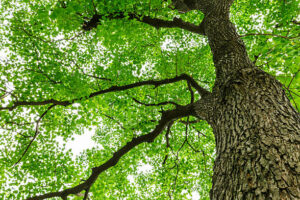Rotted wood is a common nightmare for homeowners. It can turn your studs into a soft, powdery brown ghost of what they were originally. Choosing rot-resistant wood is essential for any project that will be exposed to the elements. There are a few species of rot-resistant wood that hold up better than others.
Why and How to Choose Rot-Resistant Woods
The wood used for outdoor applications is constantly exposed to climate conditions that can damage the material, including rain, sunlight, frosty winters, and insects. Moisture, in particular, is a major contributing factor to the deterioration of timber, and it can lead to wood rot, which weakens the material structure and creates a safety and health hazard. To prevent this, it is advisable to use rot-resistant wood.
Hardwoods are naturally rot-resistant, especially when sourced from old-growth trees. Domestic rot-resistant hardwoods include cedar, redwood, and old-growth cypress. Tropical hardwood species such as Ipe, lignum vitae, and Purpleheart also offer natural resistance to rot.
Teak is a popular choice for furniture because of its beauty, durability, and rot resistance. However, it is a very dense wood and can be difficult to work with. Therefore, regular upkeep is a must to maintain its strength and appearance.
Types of Wood Species That Do Not Rot
Wood is a natural material that provides character to the exterior of your home. It adds warmth and beauty while also protecting your house from the elements. However, not all wood is created equal. Some types of wood easily rot, while others are naturally resistant to this common issue.
The most rot-resistant domestic wood species include cedar, redwood, old-growth cypress, and yew. These species of treated wood are known for their high level of moisture content (MC) and their complex chemical compositions that make them less susceptible to rot fungi.
Other domestic rot-resistant woods include oak, which has a high level of tannins. Tannins are organic compounds that act as natural preservatives and protect the wood from moisture damage. Oak is a dense, tough, straight-grained wood that resists rot and insect infestations and takes stain well. Another rot-resistant tropical wood is teak, which contains oils that prevent water from penetrating the surface of the teak wood. This is why teak can be a long-lasting and beautiful material for decking, cladding, furniture, and marine applications.
Spanish Cedar
This exotic wood is a favorite for door and window manufacturers, as well as other millworkers. Its natural termite and rot resistance allows it to stand up to severe weather conditions. The wood also has a pleasing aroma that is known to ward off pests.
This wood is native to Central and South America and the Caribbean, but it is also frequently plantation grown. It thrives in moist, well-drained soils and can grow comfortably on sites that receive less than about 3,000 millimeters of rain per year. It is also a favorite for crafting cigar humidors because it maintains high levels of humidity while providing a pleasant aroma.
Spanish Cedar is an easy-to-work wood that can be used with hand or power tools. The grain is fairly uniform and ranges from light pink to reddish brown, and the color darkens as it ages. The wood also features pockets of oil and gum, which can create fuzzy surfaces and require extra sanding to reach finer grits. The wood is often sold as red cedar alone, but it does not belong to the same genus as true cedar. It belongs to the Meliaceae family, along with Genuine Mahogany.
Black Walnut
Black walnuts are a hardy, fast-growing tree native to the eastern United States. Their heartwood is rated very resistant to decay, and the wood’s texture and grain patterns are very attractive. It’s also very workable, though it can clog planer blades, and it can suffer from “planer tear out” when working pieces with an irregular or figured grain pattern. Its naturally rot-resistant wood also holds glue stains and finishes well.
Black Walnut trees produce a heavy crop of baseball-sized, lime-green fruits from late summer through October. The heaviness of the fruit can be a nuisance, but a more significant problem is the fact that they drop juglone throughout the season, which acts as a natural herbicide. Juglone inhibits the growth of certain other plants and leaves them with less competition for water and nutrients.
The root system of black walnut is extensive, and the trunks can grow to 30 meters (100 feet) tall. These characteristics make the tree an excellent choice for reclaiming mined land. However, raised garden beds built near these trees must be carefully designed to ensure that the roots do not infiltrate and damage the soil.
Mahogany
Mahogany (Swietenia macrophylla) is an extremely beautiful, dense, and rot-resistant hardwood that is widely used for cabinetry, furniture making, and musical instruments, particularly the backs, sides, and necks of acoustic guitars and drum shells. The wood is also valued for its sturdiness and workability in exterior construction use.
Like other rot-resistant woods, mahogany has little rot resistance in the outer layer of sapwood, but the deeper heartwood is a different story – it’s rich in organic materials known as extractives that make the wood highly durable and rot-resistant. Slow-growing and old-growth trees produce more heartwood and generally have more of these valuable extractives than fast-growing, plantation-grown lumber.
Genuine mahogany is harvested from tropical areas around the world, where it has long been a staple of the furniture industry and a vital economic resource. Unfortunately, illegal harvesting has become a problem, depriving the region of a valuable resource and contributing to the destruction of rainforests, displacing indigenous peoples, and feeding international crime rings. This wood is often exported through falsified records and bribery. As a result, it isn’t easy to find true mahogany that has not been harvested in this manner.
Teak
Often called the gold standard in the rot resistance of woods ever, teak (Tectona grandis) has long been prized for its durability and beautiful color. It is also highly resistant to water and other environmental stresses, as well as termites.
A tropical wood, it grows in areas with warmer temperatures and higher moisture levels, making it naturally resilient and resistant to rot. Like Ipe, it is extremely durable and can withstand harsh weather conditions for decades without needing chemical treatment. Its natural color ranges from golden to medium brown, and it darkens with age. Teak is fairly easy to work with, though it does have a high silica content that can blunt tools and cause some splintering.
Other domestic rot-resistant woods include cedar, redwood, and old-growth pine. However, second-growth versions of these species don’t hold up to the same rot resistance as their older counterparts do. Also, cypress, an abundantly available wood here in the southeast, has an excellent track record as a rot-resistant option. It is affordable, easy to work with, and accepts stains very well.
Redwood
Redwood trees are incredibly resilient, with their rot-resistant bark, deep roots, and large size. Their natural defenses are complemented by a wide variety of chemicals and tannins that make them insect-, fungus- and fire-resistant. Successive ice ages have isolated redwoods to their current coastal range, but even then, they grow to huge heights and live up to 2,000 years.
While many wood structures like decks and pergolas are often treated chemically to prevent rot, some naturally resistant wood species, such as cedar, cypress, and teak, can be used in outdoor projects without any further treatment. But even the best of these naturally resistant woods not-resistant woods will need some sort of protection from the weather, especially with a trellis that supports twining plants such as clematis or jatoba.
Cypress is rated as moderately durable to very durable regarding decay resistance, and it grows throughout the U.S. It is a light brown color with sapwood that is nearly white, and it has a straight to wavy grain with a medium to coarse texture. It is easy to work with and accepts stains well.
White Oak
White oak (Quercus alba) is a well-known hardwood species known for its natural beauty, strength, and rot resistance. It is a popular choice for indoor and outdoor furniture, flooring, and cabinetry. Its durability also makes it a favorite for outdoor structures like decking and fencing. Its natural rot-resistance is further enhanced by the presence of tannins, which act as natural wood preservatives.
As with any wood species, growing and maintaining a healthy white oak tree requires a vigilant eye. Watch for signs of pests and diseases, as well as nutrient deficiencies that can inhibit the plant’s growth. Regularly aerating the soil and applying balanced fertilizer in spring can help your tree thrive.
In addition, white oak trees produce acorns that provide a nutritious source of food for wildlife. The flowers of this tree bloom in the spring, and its fruit ripens from autumn to winter, attracting a variety of birds and mammals. This tree is native to Eastern and Central North America. It grows to a height of up to 100 feet and can live for centuries.






